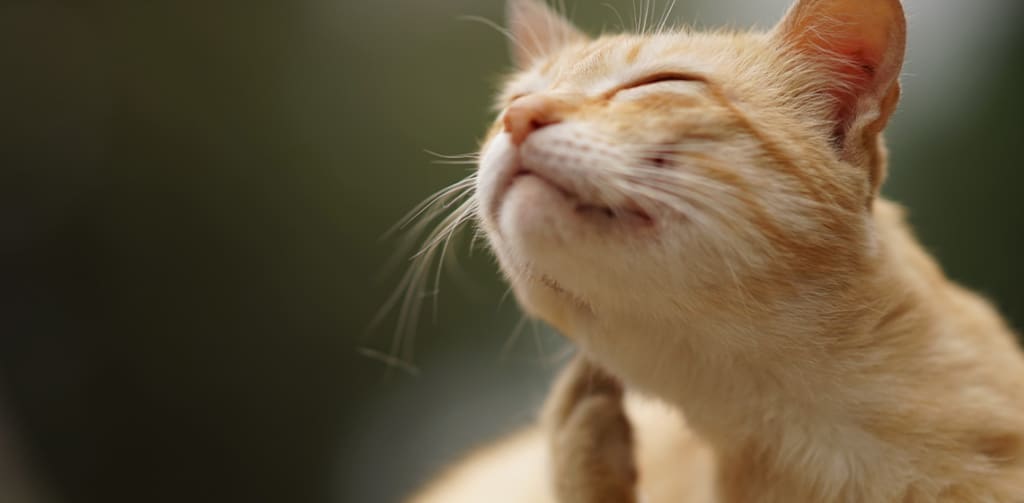Everyone dreads the thought of fleas! Fleas are miserable for your kitten and a real nuisance for you. Once fleas are present in the household, it can be tricky and time-consuming to get rid of them. So, as with most things, prevention is better and much easier than cure! Let’s look at some proven ways to safely get rid of, and importantly prevent, fleas on your kittens.
Table of Contents
Why is flea control so important?
Naturally, fleas on kittens are annoying and itchy. However, they can also transmit tapeworm to your kitten and in severe cases can cause anemia (serious blood loss) if you don’t get rid of fleas on your kitten’s fur.
Some cats and kittens are allergic to flea saliva, meaning they get a very nasty skin reaction to any flea bites, requiring additional treatment by a vet.
On top of this, fleas can, and will, also bite humans! Once your kitten brings fleas into the home, their life cycle means that they can survive in the carpets and soft furnishings for many months, resulting in a huge flea problem, especially if you live in a warm environment.
So as you can see, flea control really is essential because fleas on kittens affect more than just a young kitten!
How can I tell if my kitten has fleas?
A flea infestation can bring skin irritation to your cat, and even dogs. If your kitten has fleas, you may notice them scratching a lot, or more than usual. They may seem restless. When you stroke them, you may notice little scabs or bumps along their back. You may even see fleas on their fur!
If you suspect fleas but aren’t sure, a flea comb can come in very handy in removing fleas but doesn’t help to remove flea eggs or a possible flea infestation on your cat.
Comb your kitten and wipe any black spots/dirt onto a wet piece of cotton wool. Regular dirt or dust will stay the same, whereas flea dirt will turn red on the damp cotton wool. This is because fleas feed on blood, so flea dirt contains digested blood.
There isn’t an instant cure for fleas on kittens! Using a flea comb will remove live adult fleas straight away. You will need to do this twice a day, alongside treating the home.
How to treat fleas on your kitten
It’s natural to feel worried about using flea shampoo or medications to get rid of fleas on your cats. However, as long as you read the instructions fully and carefully, and follow your veterinarian’s advice, there are many safe options for killing fleas on cats.
To treat fleas, you will need to treat your kitten, all any other pet you have, in the house. Otherwise, a flea’s life cycle means that your kitten will keep struggling with an infestation from your other pets or your home.
Before we talk about how to safely treat fleas in kittens, here are a few important dos and don’ts:
- NEVER use a flea product designed for dogs on a cat. These often contain ingredients such as permethrin, which are toxic to cats and can be fatal.
- ALWAYS read the package insert or data sheet and be sure the product is safe for the age and weight of your kitten.
- NEVER use essential oils to treat fleas on your kitten. Some of these are toxic to cats. If you aren’t sure, ask your veterinarian before using anything on your kitten.
5 options for treating fleas on your kitten:
Flea Combs
Combing your kitten twice daily with a flea comb is a safe way of removing live fleas. However, this is unlikely to be successful on its own; using a flea comb dipped in soap and water is more effective to repel fleas.
Bathing
Bathing your kitten in a mild kitten-safe shampoo will remove live adult fleas. However, bathing is a very short-term solution, and it is unlikely that your kitten will be happy about having a bath! You would need to treat the house and other pets too. Flea shampoos are often not suitable for young kittens and unfortunately tend not to be very effective.
Flea Sprays
Some pump-action flea sprays are safe and effective for young kittens. Ask your veterinarian about suitable flea sprays for your kitten.
Flea Collars
Over-the-counter flea collars vary in their effectiveness and can sometimes cause irritation. The more modern veterinary-prescribed flea collars tend to be more effective, and these are safe to use once your kitten reaches around 10 weeks of age. The exact age will vary depending on the product, so always follow your veterinarian’s advice.
Prescription Flea Treatments
These are very effective and some are safe for kittens from around 8 weeks old. Your veterinarian will be able to advise you on the best option for your individual kitten’s needs.
So, the best way to treat fleas in very young kittens is a veterinary-prescribed flea spray and/or daily combing, alongside treating your home and any other pets.
In slightly older kittens, prescription flea treatments can be used. These are available as spot-ons, injectables, tablets, and sprays. Decide with your veterinary team which suit you and your kitten best. Remember, you will still need to treat your home and any other pets!
To treat your home, you will need to hot-wash any bedding and cushion covers (including your own), vacuum daily, and use a flea treatment designed for the home such as a household flea spray. It’s important that you read the instructions carefully, ventilate well, and ensure ALL people and animals are out of the house for the required time. These products can be especially dangerous to fish.
The best way to treat fleas in very young kittens is a veterinary-prescribed flea spray and/or daily combing, alongside treating your home and any other pets.
When to contact a veterinarian
If you suspect that your kitten has fleas, it’s a good idea to contact your veterinary practice straight away. They will be able to advise you on an effective flea treatment for the age and size of your kitten. Over-the-counter or pet-store products may be unsafe for young kittens and often aren’t as effective, meaning the fleas will take longer to treat.
You should always contact your vet if your kitten has a very large number of fleas, if they seem weak or unwell in themselves, if they have any fur missing, or if their skin looks sore.
Remember, prevention is better than cure! Keep up to date with flea preventatives, vacuum regularly, treat your home yearly, and hot-wash bedding regularly to keep the critters at bay!
FAQ
There are several safe and effective ways of treating fleas on your kittens. Flea combs and veterinary-prescribed kitten-safe flea sprays, alongside treating the home, are good options for young kittens.
Sadly there isn’t an instant cure for fleas on kittens! Using a flea comb will remove live adult fleas straight away. You will need to do this twice a day, alongside treating the home.
Unfortunately, the answer is yes! While fleas don’t live on humans, they will certainly bite you!
Yes! Fleas can be brought into the home via your or a visitor’s clothes. If you’ve recently moved, they may already be in the home.
Yes, as long as the manufacturer’s instructions are followed accurately, and the products are used correctly. Children should never be allowed to apply or handle flea treatments and should avoid stroking pets after application. Some pets, including fish, birds, and reptiles, are particularly at risk from some products. You should always speak with a veterinarian before using any products near these pets.
There are a few flea treatments that are safe for kittens, depending on their age and weight. Speak with your veterinarian about a safe treatment for your kitten

Sarah-Jane Molier wanted to be a veterinarian from around the age of ten. After much hard work, and her first degree in animal science, she realized this dream and graduated in 2009. She has been working in small animal clinics ever since.








